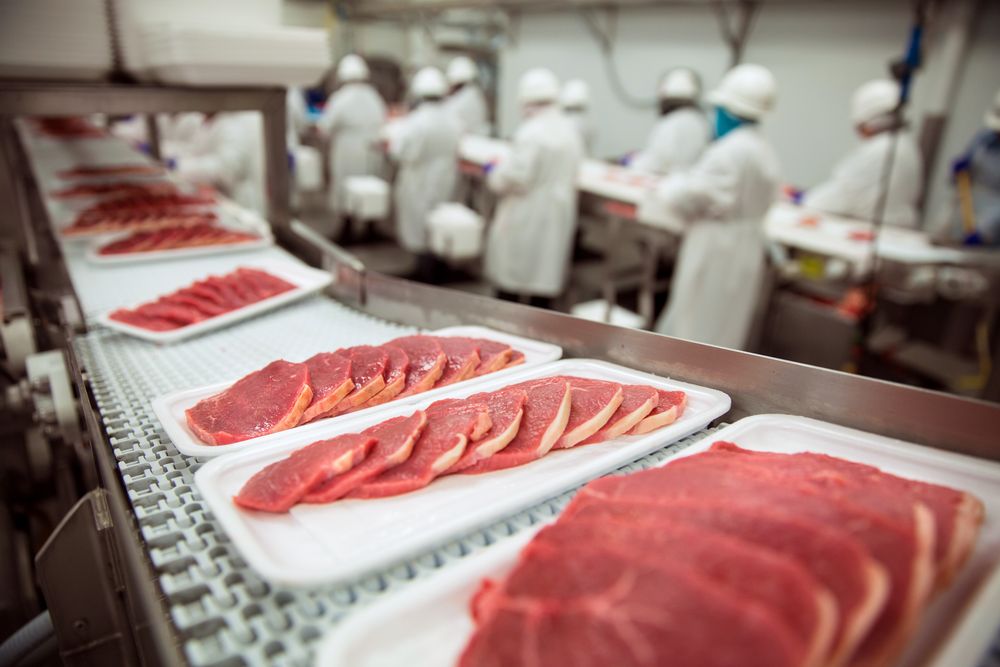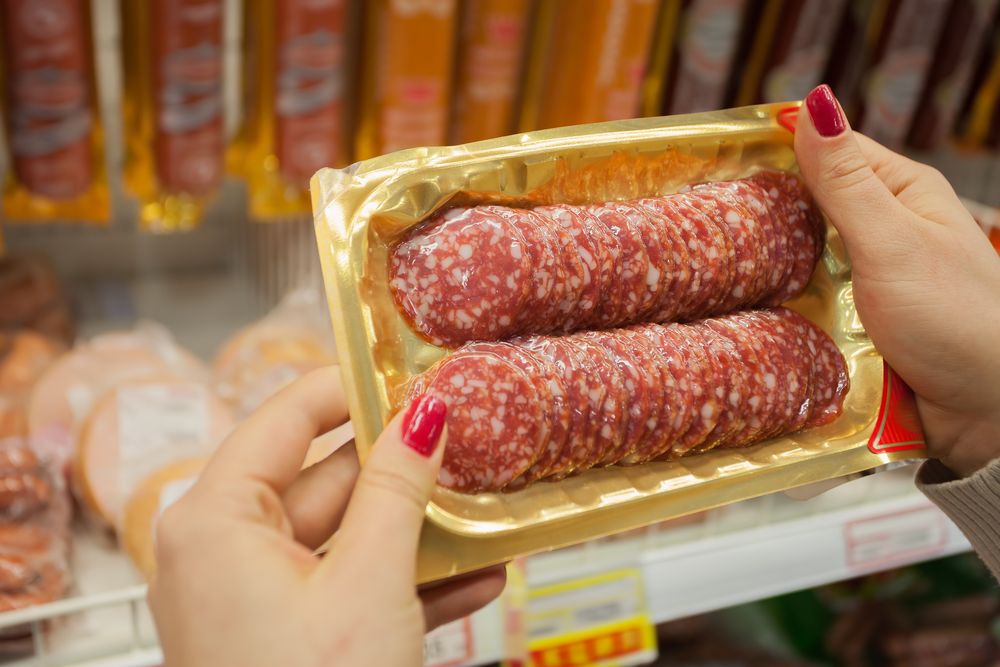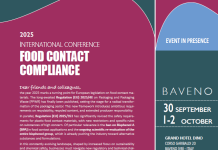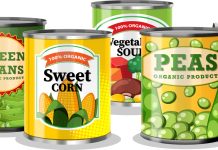 Longer shelf-lives can be obtained thanks to the development of innovative food packaging materials. Extension of the shelf-life of packaged food is also one of the ways to drastically reduce food wastes
Longer shelf-lives can be obtained thanks to the development of innovative food packaging materials. Extension of the shelf-life of packaged food is also one of the ways to drastically reduce food wastes
The packaging protects food from the outside environment, preserving its integrity and hygienic and organoleptic properties along the shelf-life. The packages containing the product protect it from possible mechanical stresses and from all possible external contamination sources. And they preserve food for the time between packaging, marketing and consumption, even in adverse environmental conditions. Furthermore, packages display the product and allow its identification, inform consumers, facilitate transport from place to place, without damaging or altering it.
Food packaging materials must comply with the EC Regulation Nr. 1935/2004 on materials and articles intended to come into contact with food (frame rule), which establishes the general principles concerning specific groups of materials and articles. Then there are specific measures that include detailed provisions for single materials or groups of materials (plastics, ceramics, glass, paper, etc.). MOCA should not constitute a danger to human health, lead to an unacceptable change in the composition of food or even cause the deterioration in their organoleptic characteristics. All companies involved in the production of materials, which come into contact with food directly or indirectly – as for instance manufacturers of packaging-related materials and components, food industry, manufacturers of food processing, filling and packaging equipment as well as all companies that import, distribute, formulate or use a substance, mix or article – must guarantee for the safety of the marketed article.
The safety of materials intended to come into contact with food must be a prerequisite for the food industry. On the market there are innovative packaging materials that ensure the compliance with safety requirements, while allowing to increase the shelf-life of packaged foodstuff, and that are arousing great interest in the food processing industry. 20% of food wastes result during the processing, storage and transport steps. Extended shelf-life of food leads to a reduction of food wastes, a subject for which consumers are very sensitive, and an interesting marketing lever for the food industry.
Extending the shelf-life of perishable food
The Italian Consortium of corrugated board manufacturers for fresh fruit and vegetables published a study on “Improved quality of corrugated board containers for fruit and vegetables: effects on the shelf-life and organoleptic properties of the packaged product” conducted by the University of Bologna, and promoted in cooperation with the national consortium Comieco. This study measures the benefits in terms of increased shelf-life of fruit and vegetables in corrugated board packages supplemented with natural substances capable to reduce the spoilage of these foods caused by the action of microorganisms.
The first step of the study concentrates on the innovative aspects of corrugated board production, and specifically on the identification of natural antimicrobial substances, in different quantities and concentrations, which are inserted into the package. Then it monitors the effects on packaged fruit and the persistence over time of these positive effects. The second step consists in the production of several samples using this innovative packaging system, and their use at one of the major producers of fruit and vegetables in Italy. Three different types of corrugated board packages have been taken into account: traditional packages (commonly used on the market), the traditional innovative package (same package supplemented with antimicrobials), and a totally innovative package (a crate with more paraffin due to its improved antimicrobial effect).

Packaged fruit was subjected to microbiological analysis, visual inspection, and the organoleptic characteristics – ripeness, colour, odour, texture, taste – were evaluated by a panel test. All the tests have given positive outcomes for the innovative packages, both in terms of microbiological and organoleptic parameters, evaluating an improvement of the shelf-life of the examined fruit. Natural antimicrobials disinfect the surface of the package and reduce the pathogenic microorganisms while increasing the food safety. In addition, they slow down ripening and senescence processes of fruit, extending the product shelf-life by more than one day. Always referred to fresh fruit and vegetables, containers obtained from recycled plastics, especially PET, combined with active packages, allow to increase the shelf-life and avoid food wastes. These packages are particularly appreciated for highly perishable fruits as berries.
Active packages release in a controlled manner substances that improve the shelf-life of the product, for example by exerting an antimicrobial, antioxidant or absorbing function or by removing from the head-space of the package oxygen and ethylene, the substance released by the fruit and responsible of ripening. According to current legislation, recycled PET can be used only between two layers of virgin PET, or alone if treated in a decontamination plant approved by EFSA. In addition to environmental qualities, recycled PET offers high product protection thanks to the heat seal, and contributes to extend the product shelf-life.
New sustainable packaging
Environmental sustainability is becoming very important for an increasing number of consumers. The development of sustainable packaging, capable of extending the shelf-life of food and limiting wastes, is becoming a priority for the manufacturers of food packaging. The number of packages obtained from renewable energies and recycled after use, is continuously increasing; the same applies to packages produced with eco-sustainable materials or with a smaller amount of material, but that in any case can ensure the functionality and protection as well as the safety and organoleptic properties until the expiry date.
There is a particular interest toward new technologies, nanotechnologies and nanocomposites for obtaining high-performing materials, biodegradable polymers and biopolymers, active materials for the extension of the shelf-life or smart materials for monitoring and tracking packaged food. Hence, there is an increasing demand for biodegradable polymers made from – microbial or animal – biomass, or even synthetic polymers such as polylactic acid (PLA), or produced by microorganisms such as poly-hydroxy-alcanoates (PHA or derivatives). Biodegradable PLA films are being explored for the packaging of fresh produce. Provided with micropores on the surface obtained with laser microperforation, these films offer top permeability to water vapor, so as to reduce spoilage of fruit. PLA films are suitable also for modified atmosphere packaging of fresh fruit and vegetables.
The European RefuCoat project aims to develop two new types of bio-based food packaging materials. The first formulation is an active coating consisting of polyglycolic acid and modified silica oxide as alternative to current metallised and modified atmosphere (MAP) packages. The project intends to develop also a new grade of compostable and bio-based polylactic acid with improved barrier properties compared to those available on the market. These formulations will be used for producing monolayer bio-based films and trays for the packaging of cereals, chips, sweets and snacks, extending the shelf-life of food while reducing packaging wastes. Other studies concern high-barrier packaging materials using nanocomposites, i. e. by adding nanoparticles as fillers to the polymer matrix. The addition of nanocomposites not only contributes to create high-barrier materials, but also improves their thermal and mechanical properties, light transmission, processability and recyclability. Nanometric fillers can be added also to biodegradable materials to improve their structural and barrier properties and – hence – the shelf-life of the packaged product.
 To improve oxygen barrier properties inorganic coatings or protein-based biopolymers are being used, while water vapour barrier properties can be improved by adding lipid compounds. The oxygen concentration inside the pack can be controlled by means of oxygen-scavenging sachets or enzymes incorporated into the polymeric film; whereas absorbing materials (sheets) absorb the liquid released by meat or fresh fish packed in trays. The market offers a variety of solutions to inhibit the microbial growth inside a pack: it can be inhibited thanks to antimicrobial agents distributed onto the surface of the package; or with active agents incorporated in the material; or with controlled release systems that can maintain the concentration of antimicrobial agent constant, thus extending the shelf-life of the packaged food.
To improve oxygen barrier properties inorganic coatings or protein-based biopolymers are being used, while water vapour barrier properties can be improved by adding lipid compounds. The oxygen concentration inside the pack can be controlled by means of oxygen-scavenging sachets or enzymes incorporated into the polymeric film; whereas absorbing materials (sheets) absorb the liquid released by meat or fresh fish packed in trays. The market offers a variety of solutions to inhibit the microbial growth inside a pack: it can be inhibited thanks to antimicrobial agents distributed onto the surface of the package; or with active agents incorporated in the material; or with controlled release systems that can maintain the concentration of antimicrobial agent constant, thus extending the shelf-life of the packaged food.
The use of nanostructures also in this field may result in the replacement of multilayer materials with monolayer materials, which are easily recyclable, but offering high performances in terms of barrier properties, mechanical resistance and improved shelf-life thanks to antimicrobial and oxygen scavenging functions. Various materials are being studied capable of releasing active substances as a result of a change in conditions such as temperature, pH and moisture. Research is also focusing on the use of ionizing radiation on packaged food, and the eligibility of packaging materials, for example for the elimination of pests in fruit and vegetables or the elimination of potential pathogenic microorganisms in different foods thus improving their safety and shelf-life. Innovation involves even edible packaging materials, i. e. consisting of edible biodegradable material used to coat food products, thus reducing the environmental impact. But not only.
The studies also include the development of edible active packaging vaporized directly on foods or used for the production of films, with incorporated natural substances, such as essential oils with an antioxidant and antibacterial activity. Another line of research concerns the creation of packaging made from by-products of the food industry, otherwise considered as wastes. “Packtin”, spin-off of the University of Modena and Reggio Emilia, is assessing the revaluation of food waste and by-products for the extraction of bio-polymers and active compounds for the creation of biodegradable packaging, edible coatings and ingredients for food preservation and safety. The natural molecules extracted seem to have a positive impact on the preservation and protection of fresh foods with short shelf-life, comparable or sometimes even higher than that of synthetic polymers.



